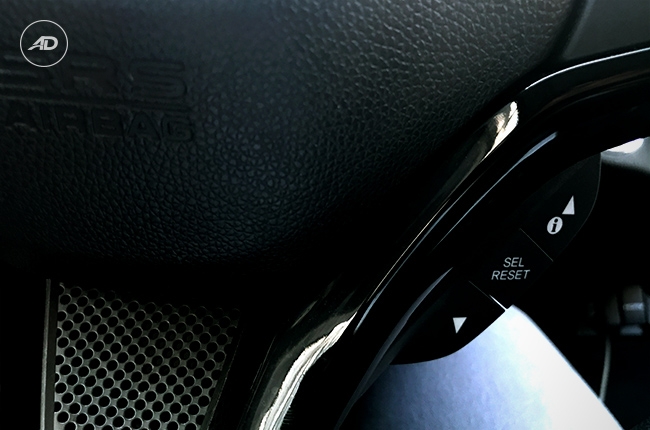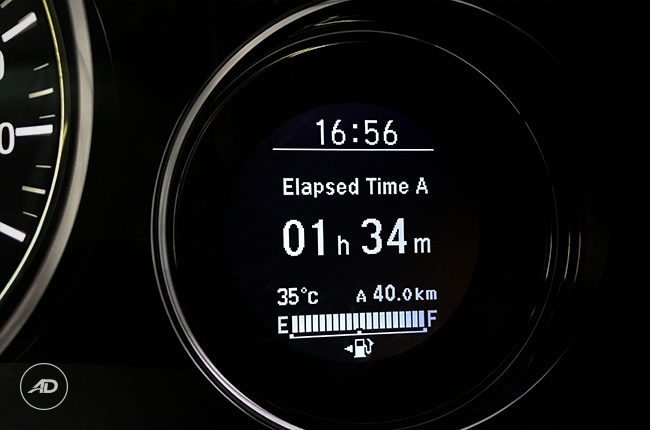
It’s needless to say that measuring your car’s fuel consumption is natural, if not necessary. After all, we spend our hard-earned cash in fuel prices that go up sporadically. And, the new fuel excise tax rates from the TRAIN law didn’t help, either.
Most modern cars are equipped with electronic fuel economy meter, usually embedded in the instrument clusters. However, older cars don’t come with this convenient feature, and some might even question the integrity of the pre-installed meter. If you are one of those people, don’t fret; there is a way to measure your actual fuel consumption — old school style.
In the Philippines, there are two units of fuel economy: km/L and L/100 km. For this article, we’ll be using km/L as it involves less math. Hooray.
You only need two things to compute for the fuel consumption: the distance from point A to point B (km), and the amount of gasoline used (L). We strongly recommend to measure the consumption of your daily route, just like what this author did.
Here, learn the steps on how to calculate your actual fuel consumption without using your fuel economy meter.

Step 1: Fill the tank.
Fill your vehicle’s fuel tank. This way, you will have a starting point to your fuel economy testing. It’s important to tell the attendant to NOT fill the tank manually, as this might affect the real amount of fuel that your car has. This is to lessen discrepancies in measurement. Just let the terminal stop itself when it thinks that the tank is full.

Step 2: Reset the trip meter.
Once done filling up your vehicle with fuel, you can go ahead and reset the trip meter. Any modern car has this in its instrument cluster, and you can usually do it by hold-pressing a button or switch.
The trip meter will measure the distance that you traveled during the trip.
Step 3: Drive from point A to point B.
Set fixed point A and point B. This author’s point A is the Caltex fuel station along EDSA, near the MMDA Main Office in Orense, Makati. This station happens to be near AutoDeal’s office, too. He did steps 1 and 2 here, while the rest were done at Caltex Balagtas in Bulacan (point B) — the gas station nearest his house.

Step 4: Take note of the distance you traveled.
Upon reaching point B, take note of the number your trip meter reads back to you. This is the total distance you traveled from point A to point B. For this author, he traveled a total of 40.0 km, which involved roughly 70% heavy EDSA traffic, 20% highway, and 10% provincial road.
Step 5: Fill your tank again and take note of the amount of fuel.
Fill your fuel tank again after taking note of the distance. Again, tell the attendant to not manually fill the tank.
Take note of the number shown at the fuel terminal. This is the amount of fuel that’s consumed by driving from point A to point B. For this author’s trip, he consumed a total of 4.279L.

Step 6: Do the math.
You now have the total distance traveled from point A to point B, and the amount of fuel used during the trip. It’s time to do the math.
For our trip, here’s the computation: 40 km / 4.279L = 9.328 km/L
Now that you have your car’s fuel consumption on your daily route, you can go ahead and budget your money for fuel. Easy peasy, lemon squeezy.
Latest Features
-
The difference between wax and polish / Tips & Advice
Confused about whether your car needs a wax or polish? This article will guide you on what they are and what to choose for your car.
-
The 6 things every Ford Ranger must pass before it leaves the factory / Featured Article
Every Ford Ranger, from the base model to the Ranger Raptor, goes through a full inspection process before it leaves the factory. This includes six steps that make sure it’s ready to drive a...
-
Which GAC AION EV is best for your everyday lifestyle? / Featured Article
The GAC AION lineup has something for everyone, maybe you're after space, speed, or just a smooth city drive. Here's a quick breakdown of which model might work best for your day-to-day life...
Popular Articles
-
Cheapest cars under P700,000 in the Philippines
Jerome Tresvalles · Sep 02, 2024
-
First car or next car, the Ford EcoSport is a tough package to beat
Jun 18, 2021
-
Car Maintenance checklist and guide – here’s everything you need to know
Earl Lee · Jan 12, 2021
-
Most fuel efficient family cars in the Philippines
Bryan Aaron Rivera · Nov 27, 2020
-
2021 Geely Okavango — Everything you need to know
Joey Deriquito · Nov 19, 2020
-
Family cars in the Philippines with the biggest trunks
Sep 20, 2023
-
Head to head: Toyota Rush vs. Suzuki XL7
Joey Deriquito · Oct 28, 2020
-
Why oil changes are important for your car
Earl Lee · Nov 10, 2020
-
2021 Kia Stonic — What you need to know about it
Joey Deriquito · Oct 16, 2020
-
Top 7 tips for buying a used car in the Philippines
Joey Deriquito · Nov 26, 2020



